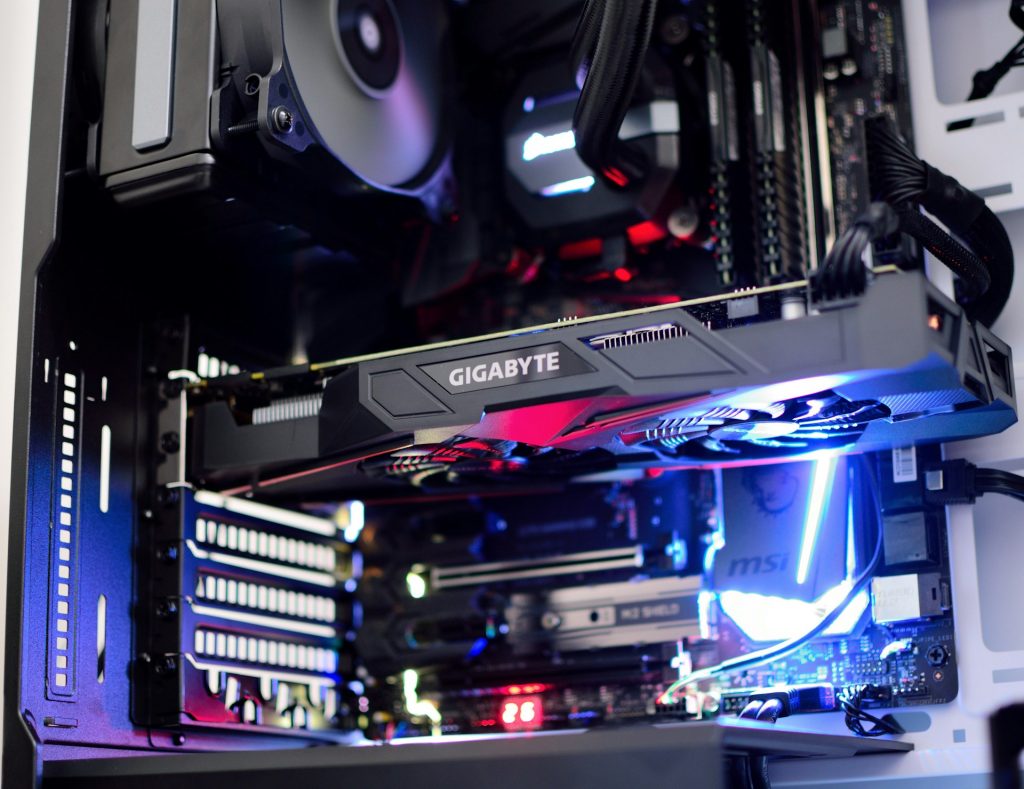What is a Safe GPU Temperature for Gaming?

When it comes to gaming on high-end or even mid-range PCs, keeping your GPU (graphics processing unit) at a safe temperature is crucial. If a GPU overheats, not only can it reduce your computer’s performance, but it can also make using a laptop physically uncomfortable—nobody wants to end up with sweaty legs. In extreme cases, overheating can cause permanent damage to the hardware. So, what is the ideal GPU temperature, and how can you keep it within a safe range?
Ideal GPU Temperatures While Gaming
There is no one-size-fits-all answer when it comes to determining the best temperature for your GPU. The optimal temperature largely depends on the design and specifications of the particular model you are using. For instance, NVIDIA’s flagship consumer graphics card, the GeForce RTX 4090, is designed to handle temperatures of up to 90°C (194°F). Similarly, AMD’s Radeon RX 7900 XTX can tolerate temperatures as high as 110°C (230°F), which is quite literally enough to boil water!
However, while these maximum temperatures are technically possible, they are far from ideal. During most gaming sessions, especially with graphically demanding games like Cyberpunk 2077 or Half-Life: Alyx, it’s more typical to see GPU temperatures range between 65°C and 85°C (149°F to 185°F). These lower temperatures are maintained thanks to modern graphics cards’ efficient design and advanced cooling systems. In less demanding 2D games, the temperatures can be even lower.
Keeping Your GPU Cool for Optimal Performance
The general rule for GPU temperatures is simple: the cooler, the better. A well-cooled GPU allows you to explore overclocking, which involves tweaking the card to run faster than its factory settings. Many graphics cards come with software tools that help you safely manage overclocking while keeping temperatures in check.
GPU Temperatures When Idle
Just like with gaming, idle temperatures vary depending on your GPU. In general, you can expect your GPU to run between 30°C and 45°C (86°F to 113°F) when your computer is not performing any heavy tasks. This range is comparable to the temperature on a hot summer day.
What to Do If Your GPU Temperature is Too High
Monitoring your GPU temperature is the first step in managing overheating. You can do this through Windows Task Manager or software provided by the GPU manufacturer. In Windows Task Manager, navigate to the “Performance” tab, select your dedicated GPU, and check the “GPU Temperature” field at the bottom.
If your GPU has been operating at high temperatures for more than a few minutes, you should immediately stop gaming and allow the hardware to cool down. Once it has cooled, there are several measures you can take to prevent overheating in the future:
-
Ensure Proper Ventilation in Your Desktop PC
Dust can block airflow, so cleaning your case with compressed air is a simple yet effective solution. Additionally, if your PC case isn’t well-ventilated, you may need to consider upgrading to a better model or adding more fans. -
Use a Sturdy Metal Stand for Gaming Laptops
Laptops are particularly prone to overheating because their cooling vents are often located underneath the device. A metal stand improves heat dissipation and helps keep your laptop cool during extended gaming sessions. -
Improve Ambient Room Temperature
A hot room can cause your PC to overheat. Try to cool the environment by closing blinds or curtains to block out sunlight, or direct a fan towards your PC to improve airflow. -
Install Liquid Cooling
Liquid cooling systems are more efficient than traditional fans, especially for high-performance gaming rigs. While they may be expensive, they can prevent the even greater cost of replacing a damaged GPU. -
Reduce or Disable Overclocking
Overclocking increases the load on your GPU, leading to higher temperatures. If your card is frequently overheating, it may be wise to scale back or disable overclocking altogether. After all, a few extra frames aren’t worth risking your hardware. -
Check Your GPU’s Thermal Paste
Thermal paste plays a critical role in heat transfer from your GPU to its cooling system. Over time, the paste can dry out and become less effective. If you’re confident in your technical skills, reapplying thermal paste can significantly improve cooling performance. -
Monitor Your CPU Temperature
Don’t forget to check the temperature of your CPU (central processing unit). An overheating CPU can raise the overall temperature inside your PC. You can monitor this in the same way you check your GPU, using the Performance tab in Windows Task Manager.
Conclusion
Managing GPU temperatures is essential for maintaining the performance and longevity of your gaming PC. While modern GPUs are designed to handle high temperatures, keeping them cool ensures better performance and prevents costly hardware damage. By monitoring your system, improving airflow, and taking steps to reduce heat, you can keep your GPU running safely even during intense gaming sessions.





